The Banner Before the Battle: Why Your Ancestors Fought Under Colors, Not Just for Them
“When you carry a banner, you carry more than cloth. You carry everyone who came before you—and everyone who may come after.”
In every generation, there are those who step forward—not just to protect what they have, but to honor what was handed down.
This week, as families across the nation observe Memorial Day, we take a moment not only to remember the fallen, but to reflect on the powerful symbols of legacy, duty, and sacrifice that stretch far beyond our modern age.
Long before military insignia, dog tags, or medals, there were banners.
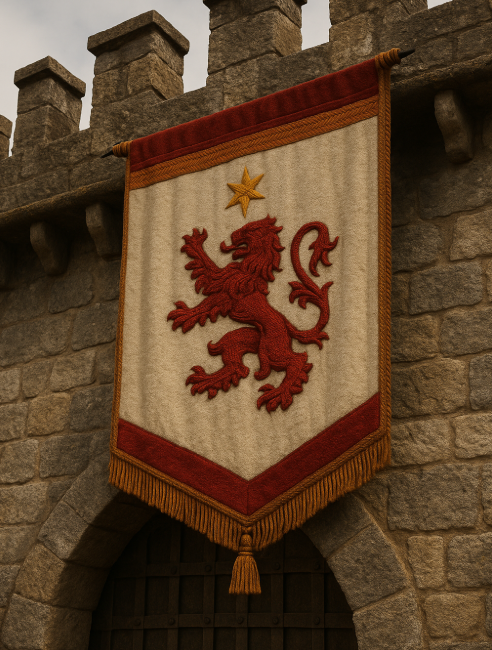
Banners as Bloodlines
In the medieval world, a banner wasn’t just something you raised—it was something you stood under, fought for, and sometimes died beside.
More than identification, a banner was a living emblem of lineage—woven with meaning, carried with purpose, and passed from hand to hand like a sacred trust. To fight beneath your family’s colors wasn’t just about knowing where your unit was in the chaos of combat. It was about knowing where you came from in the chaos of life.
These banners flew high above castle walls, were planted into soil reclaimed in battle, and were sometimes lowered only in mourning.
They represented the name of a family—but more than that, the character of it. A family that had endured famine, war, and loss. A family that had planted its roots deep into the earth and carved its symbols into stone.
The Symbols That Spoke Without Words
The iconography on these banners wasn’t ornamental. It was intentional. Each shape and color was chosen to tell a story about a family’s values, its past, and its place in the world.
- The lion roared of courage—unshakable resolve in the face of overwhelming odds.
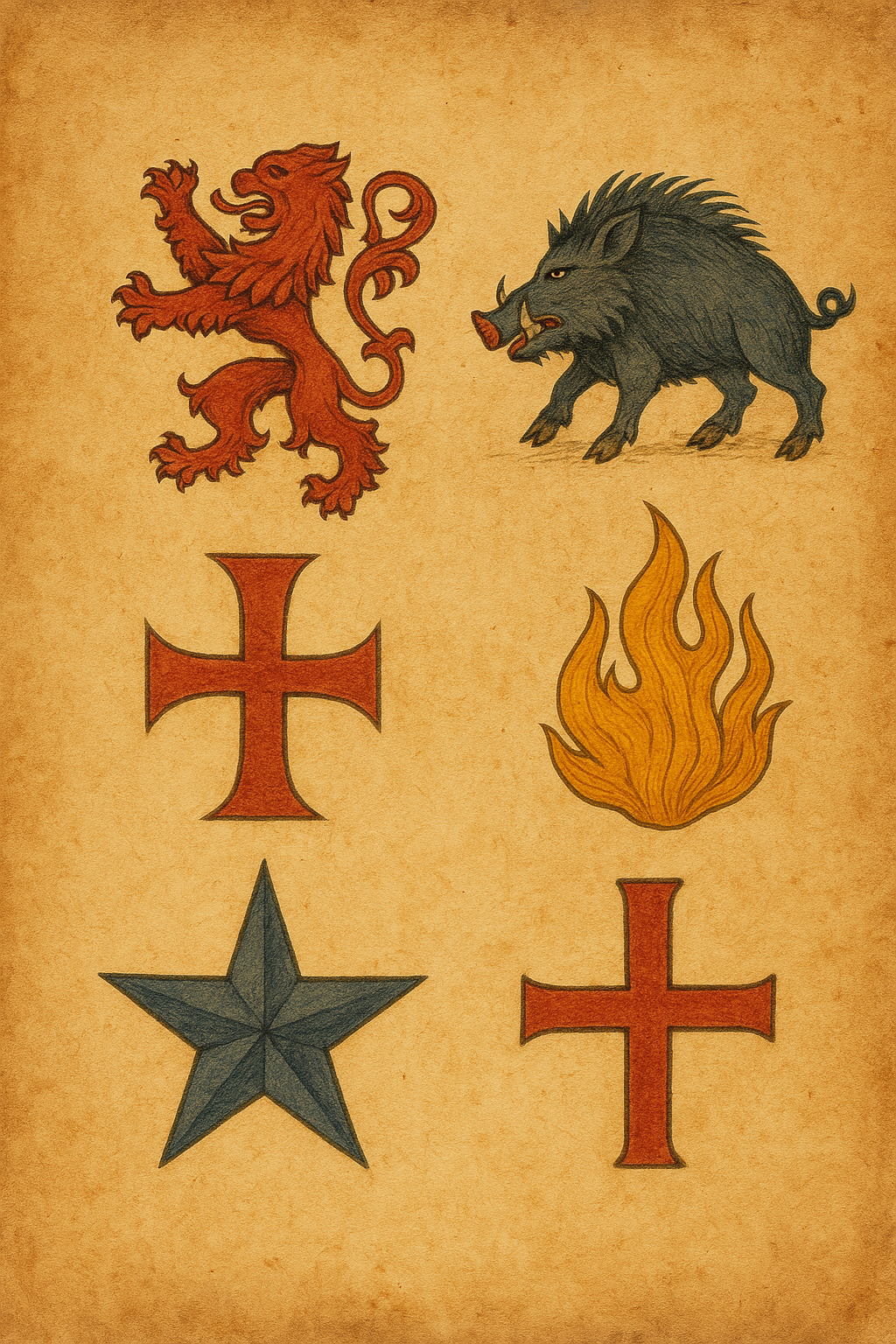
- The boar represented tenacity and fierce territorial loyalty. A wild animal, impossible to tame.
- The cross marked faith, divine service, and the willingness to die for something sacred.
- The star symbolized hope, navigation, and a link to celestial guidance.
- The flame spoke of transformation through hardship—of a name forged in fire and meant to endure.
- The red field often meant blood had already been spilled for honor, land, or survival.
Even materials mattered. Silk banners signaled wealth or favor from nobility. Woolen or linen standards suggested rural origins but strong, honest hands. The cut of the banner—swallowtail, pennon, or gonfalon—could indicate rank or region.
In battle, banners were not just markers—they were rallying points. If a line broke, the men would look for the banner to reform. If a banner went down, someone—anyone—had to lift it again. And even when torn, burned, or stained, a banner was never discarded. It was repaired. Because the story wasn’t over.
Banners in History: Real Flags, Real Fires
Here are just a few banners that shaped history—and the people who fought beneath them:
- The Banner of William the Conqueror (Battle of Hastings, 1066)
Before invading England, William reportedly carried a banner blessed by the Pope—a white field adorned with a golden cross and star. When the fighting raged and King Harold of England fell, William’s banner was raised over the hill at Senlac as a declaration: a new legacy had begun. - Joan of Arc’s Banner (Siege of Orléans, 1429)
Joan of Arc, though not a knight, carried a banner—white, covered in fleurs-de-lis and the names “Jesus–Mary.” She later said she loved her banner “forty times more than her sword.” It inspired men to follow her into fire not because of who she was—but because of what that banner stood for. - The Black Prince’s Banner (Battle of Poitiers, 1356)
Edward, the Black Prince, son of King Edward III, carried a personal banner featuring three ostrich feathers and the motto Ich Dien (“I serve”). He led from the front and held the line with a small English force against a massive French army. His banner never fell. - The Scottish Saltire (Battle of Bannockburn, 1314)
Carried by Robert the Bruce’s forces, the white cross of Saint Andrew on a blue field unified clans and lowlanders alike. When the Scots defeated the English, it wasn’t just a military victory—it was a defense of name, place, and cultural identity.
From the Ground: Banner Moments That Mattered
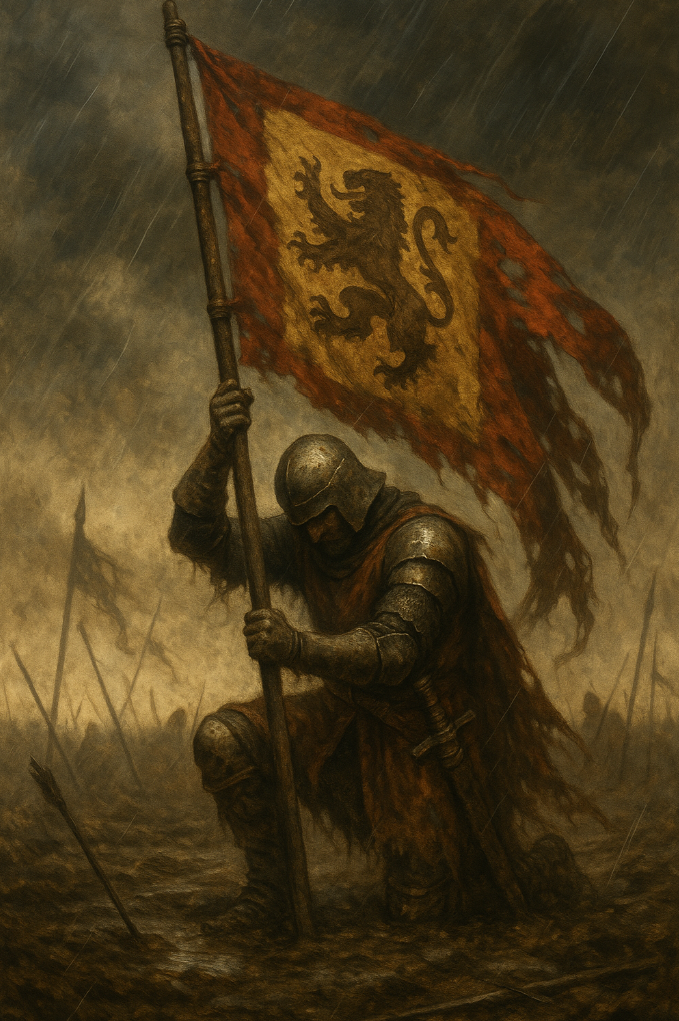
Sometimes, history doesn’t record the name—only the act. One chronicler wrote of a nameless knight at the Battle of Agincourt (1415) who, when his banner-bearer was cut down, picked up the fallen standard and planted it into the mud. Surrounded and wounded, he stood there until the English line reformed behind him. They didn’t know his family name—but they followed the colors.
Another tale from the Crusades tells of a young squire who had never held a sword in battle. When his lord was unhorsed and the banner fell, the boy didn’t run. He picked it up, held it high, and shouted his lord’s name until reinforcements arrived. His reward wasn’t gold—it was the right to carry that banner for the rest of the campaign.
Banners weren’t made to last forever—but the legacies behind them were.
They were burned, torn, buried, and even stolen. But still, they endured. Repaired, re-sewn, handed to sons and grandsons. Carried not only into wars of steel, but into generations of memory.
When your ancestors marched beneath a banner, they weren’t just fighting for a cause—they were carrying everything that made them who they were.
And in some ways, you still are.
The Weight of Symbol
A banner wasn’t just carried—it was carried forward.
Its weight wasn’t in the fabric. It was in the memory, the identity, and the promise it represented.
In medieval warfare, the banner stood for everything words couldn’t say: loyalty, lineage, sacrifice, and courage. It wasn’t a tactical necessity—it was a moral anchor.
When the arrows flew and the lines faltered, men didn’t look for orders.
They looked for the banner.
It showed them who they were still fighting for.
It reminded them of home.
And for many, it reminded them of the ones they had already lost.
Symbols of the Fallen, Carried by the Living
Today, our symbols look different—a folded flag, a memorial patch, a photo tucked into a wallet—but the meaning is eerily familiar.
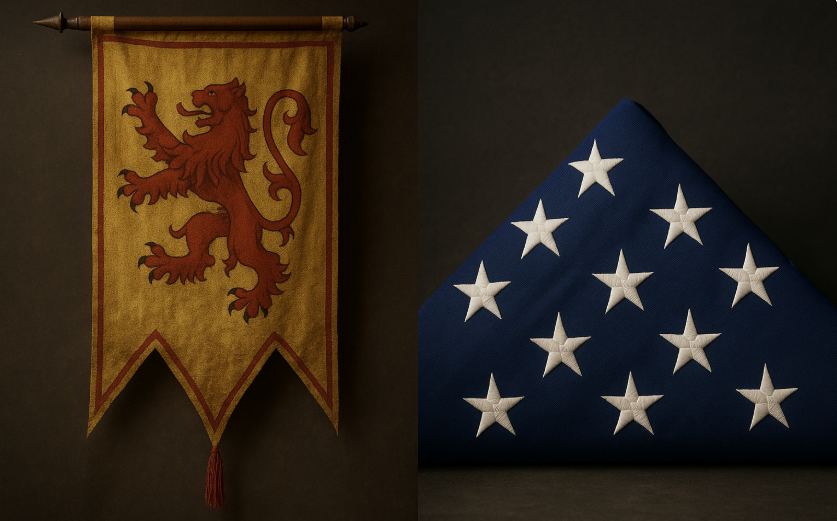
Just like the knights and soldiers who marched behind the lion or the stag or the burning star, our modern warriors carry visual echoes of the past:
- A unit insignia passed from generation to generation.
- A flag draped over a coffin and handed to a mother, spouse, or child.
- A dog tag, worn around the neck, etched with the name of the fallen.
- A tattoo of a crest, emblem, or date that ensures a memory never fades.
These modern symbols may be smaller. Quieter. But they carry the same weight.
They say:
“I belong to something greater than myself.”
“I remember.”
“I carry forward what others can no longer carry.”
Across Time and Terrain, the Same Human Thread
Consider the battlefield in 1415—mud thick around the boots, rain cutting sideways through the sky. Somewhere in the chaos, a soldier spots his banner still standing. He doesn’t know if they’re winning or losing. But he sees that symbol—and he stays.
Now consider a modern soldier on deployment. Far from home. It’s Memorial Day. His unit stands for a moment of silence, the American flag overhead, his grandfather’s surname stitched into the uniform sleeve. He’s never met the man. But he knows the story. And that story shapes the way he serves.
Both are moments shaped by symbol. Both are moments of quiet, stubborn honor.
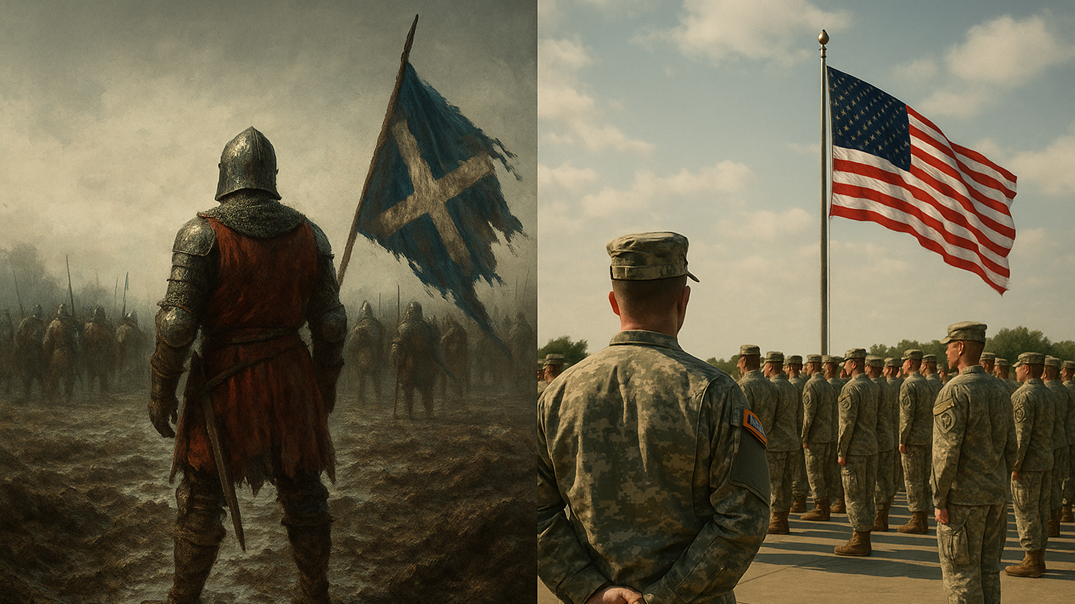
Symbols That Anchor Legacy
In every generation, we use symbols to carry what we don’t want to forget.
They don’t speak aloud.
But they whisper.
They whisper the names of our ancestors.
They whisper the weight of promises made and kept.
They whisper: “You are part of something bigger than now.”
Medieval families didn’t just hang banners for glory. They displayed them over hearths, carved them into stone, embroidered them into wedding clothes, and painted them on church walls. These symbols helped people know who they were, where they came from, and why that mattered.
The same is true today.
Symbols hold memory.
Memory holds meaning.
And meaning is what makes a name more than just a name.
Why This Still Matters
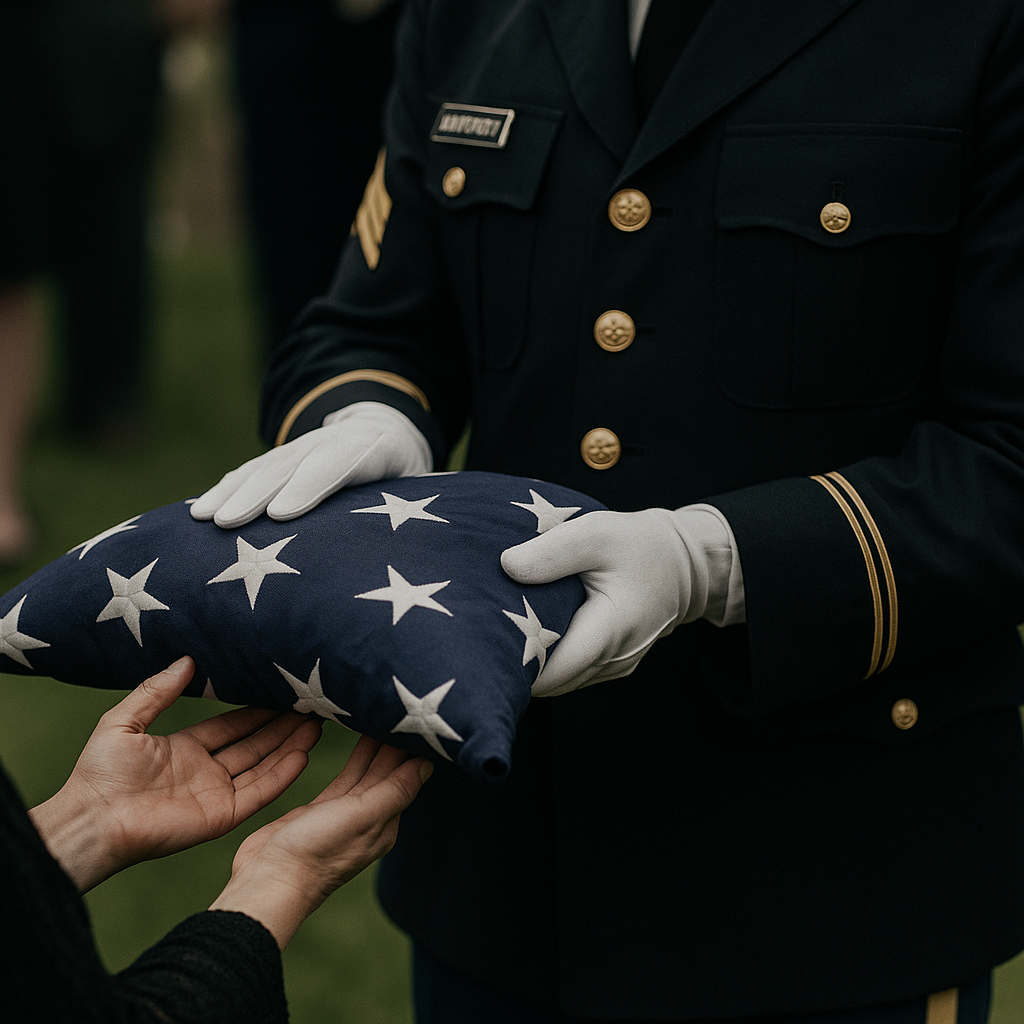
We live in an age of fast change. Headlines flicker. History scrolls by. It’s easy to feel unmoored—disconnected from the people, places, and principles that once held generations together.
But legacy doesn’t vanish just because we stop talking about it.
It waits.
Quietly.
Patiently.
In symbols. In names. In the choices we make about what to remember.
Carrying the Thread Forward
When a medieval soldier took up the family banner, he wasn’t just preserving tradition—he was honoring a debt. A debt to the ones who came before, and a duty to those who would come after.
Today, when we set aside time for Memorial Day, we continue that tradition—perhaps without banners stitched in gold or shields painted in red, but with flags on graves, names on walls, and stories passed across kitchen tables.
We may no longer fight with swords, but we still fight to remember.
And remembrance is its own form of service.
Legacy Isn’t the Past—It’s the Path
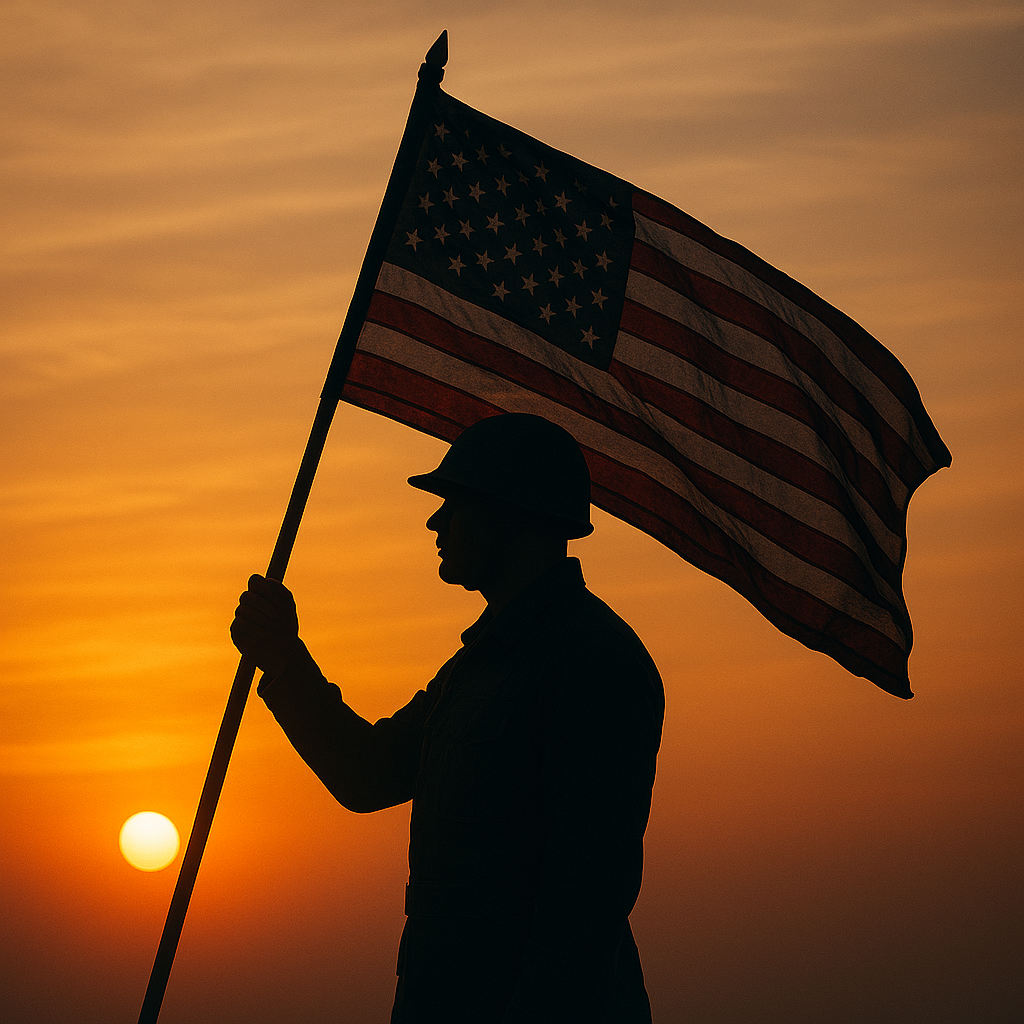
Legacy isn’t just history. It’s direction. It’s the line between who we were and who we hope to be.
When we learn about our ancestors—not just what they did, but what they believed. We gain tools for identity, endurance, and perspective.
We remember that courage isn’t only for battlefields.
That honor isn’t only for the fallen.
That lineage isn’t pride—it’s responsibility.
This week, as flags wave and names are read aloud, take a moment to think of the banner your ancestors may have fought beneath.
Then think about the one you carry now.
It’s not just fabric.
It’s family.
